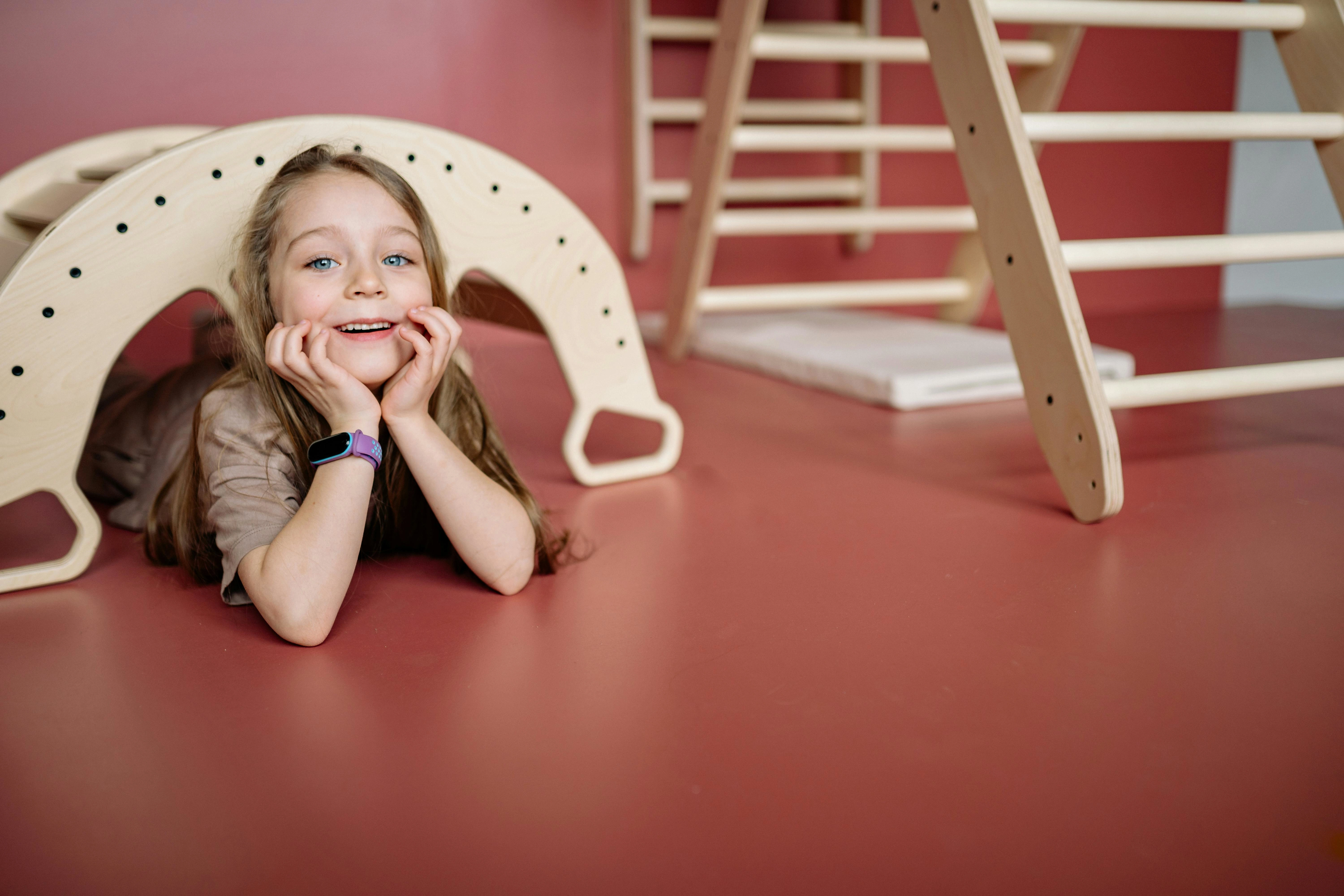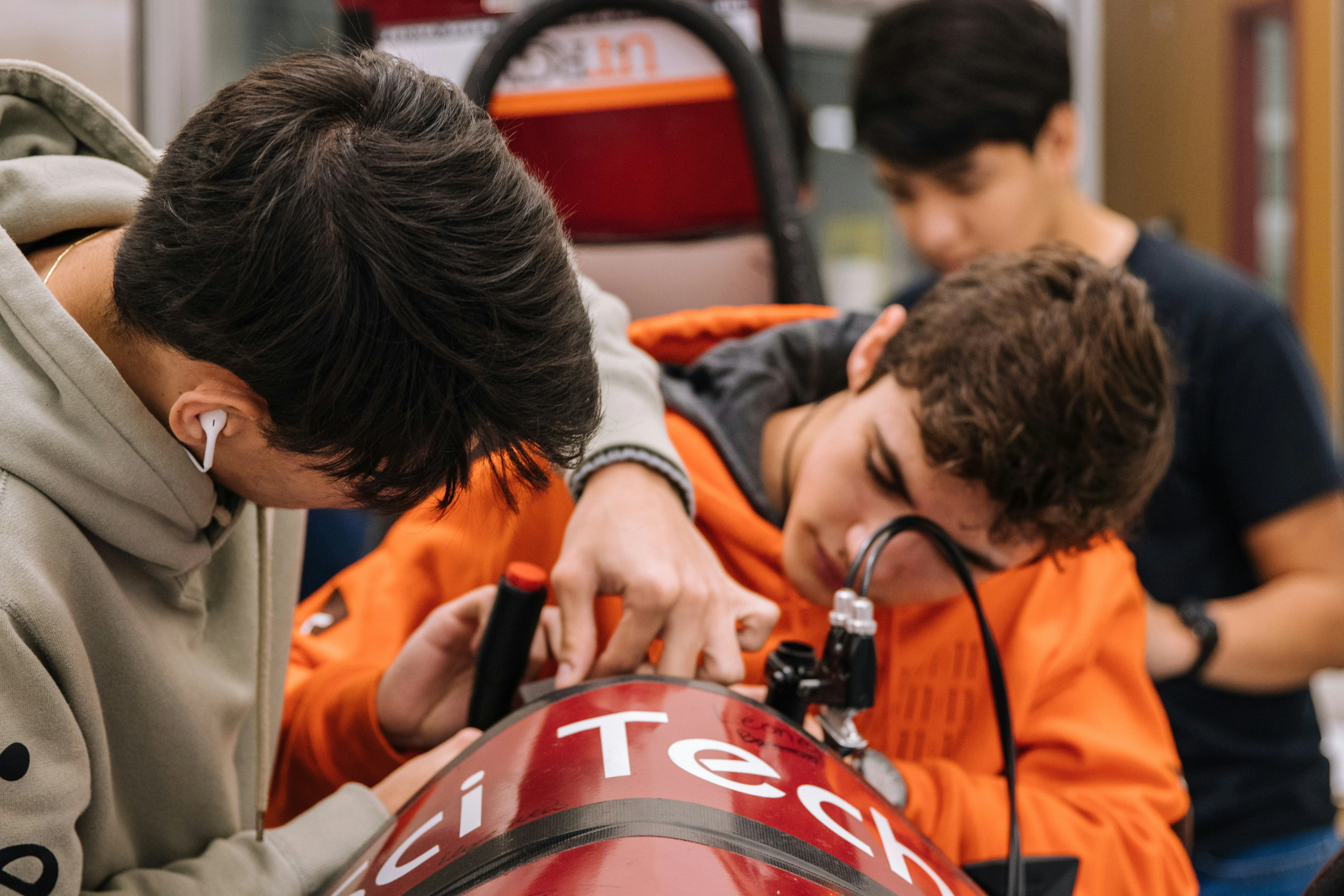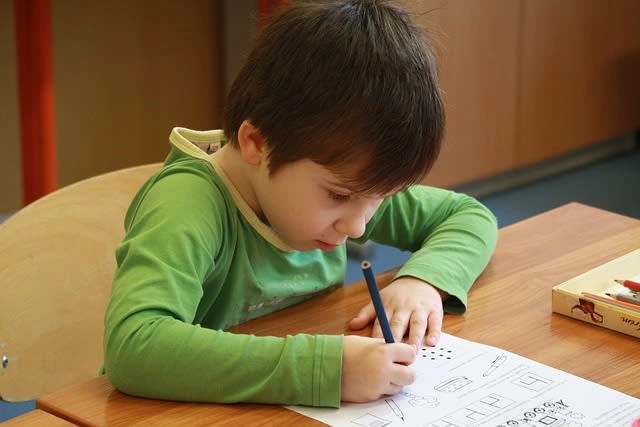Article Writing Project
Exploring STEM Learning Activities for Kids at Home
Introduction
(1) What is STEM?
Hey there, curious learners! Have you ever wondered what STEM means? Well, STEM stands for Science, Technology, Engineering, and Mathematics. Each letter in STEM represents a different area of focus. It is a treasure filled with knowledge to help us discover and understand the world around us! Is it not that exciting?
Science is about understanding the world around us, from plants and animals to the stars in the sky. Technology is all about using tools and gadgets to solve problems or make our lives easier.
Engineering involves designing and building structures, like bridges, buildings, and even robots. Mathematics helps us make sense of numbers, shapes, and patterns, like putting together puzzle pieces.
When we put these subjects together, we can do incredible things! It sounds exciting, that is right!
(2) Why is STEM important for kids?
Did you know that learning STEM at an early age helps us become smart? It is true! When kids engage in fun activities about STEM, their brains grow better, and they become better problem solvers.
STEM also helps kids think creatively, work in teams, and explore their imaginations! Learning STEM is fun and makes us extra smart!
Fun and Engaging STEM Activities for Different Age Groups
Let us look into some super fun STEM activities you can try at home! Whether you are three, eight, or even twelve, there is a STEM activity just right for you!
Activity 1: Fun with Fizz-ical Reactions!
Suitable for children around 5-8 years old. This activity is perfect for kindergarteners and early elementary school students just beginning to explore simple chemical reactions.
Supplies you will need:
• A clear glass.
• Vinegar.
• Baking soda.
• A spoon.
Let us Get Started!
Fill the glass halfway with vinegar. Now, add a spoonful of baking soda to the vinegar. Whoa! Do you see all those bubbles and fizz? It is like a mini volcano eruption in your glass!
Why Does It Happen?
When vinegar (an acid) reacts with baking soda (a base), it creates a new carbon dioxide gas. This gas makes all the bubbles and fizz you see. It is like magic happening right before your eyes!
Experiment Time!
Try adding more vinegar or baking soda and see what happens. Can you make the fizz and bubbles go higher? Make sure to do this experiment in your kitchen or outside the home. The more, the merrier!
Let us move on to our next mind-blowing STEM activity!
Activity 2: Magnetic Magic!
Ideal for children between 5-10 years old. This activity can captivate preschoolers and elementary school students, offering an introduction to the concept of magnetism in a hands-on way.
Supplies you will need:
• A magnet (like the ones on your fridge)
• Different objects around your house (paperclips, coins, toy cars, etc.)
Let us get started!
Hold the magnet close to different objects and see what happens. Do they stick to the magnet? Amazing, right? You just discovered the power of magnetism!
How Does It Work?
Magnets have power that attract objects made of metals like iron or nickel. When you hold the magnet close to these objects, it pulls them towards itself. It is like a secret superhero power!
Try It Yourself!
Go on an adventure around your house and find different objects to test. Which items can a magnet attract, and which ones are not? Now, you can impress your friends with your newfound magnetic skills!
Next up, get ready to become a master engineer with our fantastic building activity!
Activity 3: Building Bridges!
This activity is for children aged 6-12 years old. It is great for elementary school students with the ability and understanding to create simple structures and conduct basic load tests.

Completed STEM Bridge Assignment
Supplies you will need:
• Craft sticks or Popsicle sticks.
• Small containers or books to support your bridge.
• Rubber bands or tape
Let us get started!
Can you build a bridge using the craft sticks and support it with containers or books on each end? Connect the sticks by using rubber bands or tape. Wow, you are already on the path to becoming an engineer!
How strong can your bridge be?
Carefully place small objects like toy cars or coins on your bridge. How many can it hold before it starts to sag or collapse? The stronger your bridge design, the more weight it can bear.
Test Your Bridge!
If your bridge can hold ten toy cars, add one more and see what happens. Will it stay strong or give up? Engineers always test and improve their designs, so do not be afraid to try different ways of building your bridge. You are doing a great job!
Let us explore the world of technology and coding with our next activity!
Activity 4: Coding Adventure!
This activity is for children aged 6-12 years old. This activity is great for elementary school students with the skill and understanding to create simple structures and conduct basic load tests.
Supplies you will need:
• A computer or tablet
• Paper and pencil
Let us Get Started!
Have you ever wanted to create your very own game or animation? With coding, you can! Coding is like giving instructions to a computer. There are cool websites and apps where you can learn to code by playing fun games. Let us take a coding adventure together!
What is Coding?
Coding is a bit like telling a story. Instead of words, you use special commands that a computer can understand. You get to decide what happens and how things behave in your game. It is your digital world where anything can happen!
Create Your Own Game!
Visit a kid-friendly coding website or app (like Scratch) and follow the instructions. You can make characters move, make sounds, and even make them talk to each other. How awesome is that?
Start with a simple game and let your imagination soar! Who knows, maybe you will be the next game developer.
We are almost at the end of our STEM adventure, but we cannot forget about the kitchen! Let us discover the science behind our favorite recipes!
Activity 5: Kitchen Science!
This targets kids aged 7-12 years old. This activity playfully introduces basic coding concepts for elementary school students curious about technology and programming.
Supplies you will need:
• An adult to help you with cooking and kitchen tools.
• Ingredients like water, salt, food coloring, and vinegar.
Let us Get Started!
The kitchen is not just a place to make tasty treats. It is a laboratory, too! Did you know that some science happens right in your kitchen? Let us explore a few cool experiments you can try using common kitchen ingredients. Get ready to be amazed!
Why Does It Happen?
When you mix different ingredients or apply heat, chemical reactions can happen, just like in our volcano experiment. Food coloring can mix and spread in water, salt can make ice melt faster, and vinegar can create an unexpected effect when with baking soda mixture. Science is truly all around us!
Time to Experiment!
Ask an adult to help you with the experiments. Mix different colors of food coloring in a glass of water and see how they blend. Take two ice cubes and sprinkle salt on one of them. Which one melts faster?
Lastly, combine vinegar and baking soda in a safe container and watch the exciting fizz! Remember to take safety precautions and have fun exploring the wonderful world of kitchen science!
Specific Guidance for Parents on STEM Learning Activities for Kids at Home
This guide aims to provide specific guidance for parents, practical guides and resources, and recommend kits for their children in STEM activities at home.
1. Create a STEM-Friendly Environment:
(a) Dedicate a space in your home for STEM activities and equip it with essential materials, tools, and resources.
(b) Display STEM-related books, posters, and educational materials.
(c) Encourage open-ended exploration and experimentation.
2. Incorporate Daily STEM Activities:
(a) Encourage observation of natural phenomena, such as plants, weather, and animals.
(b) Engage children in measuring and estimating while cooking or working on DIY projects.
(c) Encourage technology and coding via age-appropriate apps, games, or coding kits.
3. Encourage Hands-On Experiments:
Recommended STEM experiment kits: (list specific kits based on the child's age)
a) "Young Explorers Chemistry Set" - Ideal for children aged 5-8, it introduces basic chemistry concepts with safe and exciting experiments.
b) "Robotics Building set" - Designed for children aged 8-12, this kit helps develop engineering skills by building and programming robots.
c) "Electronics Discovery Kit" - Suited for children aged ten and above, this kit introduces electronics through hands-on circuit building.
(Include specific links or manufacturer information)
4. Utilize Online Resources:
Visit educational websites and platforms that offer STEM activities for children, such as:
a) Khan Academy (www.khanacademy.org)
b) NASA Kids' Club (www.nasa.gov/kidsclub)
c) National Geographic Kids (www.kids.nationalgeographic.com)
5. Attend Virtual STEM Workshops:
(a) Encourage children to participate in virtual STEM workshops, webinars, or science camps offered by local or national organizations.
(b) Check with museums, libraries, and universities for online STEM events and programs.
6. Engage in Project-Based Learning:
(a) Encourage children to take on independent projects, such as building a model, conducting science experiments, or designing a simple circuit.
(b) Provide support, guidance, and encouragement throughout the project.
7. Foster Collaboration and Discussion:
(a) Engage in conversations about STEM topics during meals or family time.
(b) Encourage children to ask questions, make predictions, and explain their thinking.
(c) Foster collaboration by organizing STEM challenges or competitions with siblings or friends.
Supporting STEM learning at home is an enriching experience that can foster a lifelong interest in science, technology, engineering, and mathematics.
By creating a conducive environment, utilizing recommended kits and resources, and providing support, parents can help their children in hands-on STEM activities.
Remember, the journey of STEM learning is about exploration and discovery, so have fun and enjoy the process with your child!
STEM Learning Activities for Kids at Home in Everyday Play and Learning
Now, let us talk about bringing STEM into our daily lives. You do not need fancy equipment or a science lab to learn STEM. You can find STEM all around you!
When helping in the kitchen, you are using math to measure ingredients. When you are playing with toys, you are exploring cause and effect.
Outside, you can observe nature and learn about plants and animals. When you are building with LEGO, you are becoming an engineer!
So, remember, STEM is not just in textbooks—it is everywhere! Keep your eyes open, ask questions, and explore the world around you to discover STEM moments every day!
Integration of STEM Learning Activities for Kids at Home with School Curriculum
STEM (Science, Technology, Engineering, and Mathematics) activities at home engage children in hands-on learning and complement their education within the school curriculum. Aligning STEM activities with educational goals and curriculum standards helps bridge the learning gap between home and school.
This guide aims to provide educators and parents with practical strategies for STEM learning activities for kids at home with the school curriculum.
1. Understand Curriculum Goals and Standards:
(a) Review the curriculum goals and standards provided by the school or educational institution.
(b) Identify specific STEM concepts or skills that align with your child's grade level
2. Choose STEM Activities that Align with Curriculum Standards:
(a) Select STEM activities that relate to the curriculum standards and topics covered in school.
(b) If the curriculum focuses on motion and forces, engage children in building and testing model cars, or designing paper Aero planes to explore these concepts.
3. Collaborate with Teachers:
(a) Stay in communication with your child's teachers and inquire about the STEM topics covered in class.
(b) Seek suggestions or guidance on STEM activities at home that align with classroom learning.
4. Offer Cross-Curricular Connections:
(a) Identify opportunities to integrate STEM with other subject areas, such as language arts, social studies, or art.
(b) For instance, children can create a model of a historical landmark using recyclable materials while learning about its historical significance.
5. Document and Reflect:
(a) Encourage children to document their STEM activities through journals, photographs, or videos.
(b) Engage in reflective discussions with children, asking them to explain their thought processes, challenges faced, and lessons learned.
6. Showcase Projects in School:
(a) Offer opportunities for children to present their STEM projects or experiments in school.
(b) Check if there are science fairs, project exhibitions, or STEM-related events where children exhibit their work to peers and teachers.
7. Encourage Peer Collaboration:
(a) Facilitate opportunities for children to collaborate with their classmates on STEM projects or experiments.

Students Collaborating to tackle STEM Challenges
(b) Organize virtual group activities or provide time during school breaks for children to connect and work together on STEM challenges.
8. Support STEM-related School Projects:
(a) Identify school projects that can benefit from incorporating STEM elements.
(b) Offer guidance, resources, and hands-on support when working on these projects at home, especially if they involve engineering, technology, or scientific inquiry.
By aligning STEM learning activities for kids at home with the school curriculum, educators and parents can enhance children's learning experiences and reinforce concepts covered in the classroom.
Understanding curriculum goals, collaborating with teachers, offering cross-curricular connections, and supporting school projects all contribute to a holistic and integrated approach to STEM education.
Let us work together to inspire and empower the next generation of innovators and problem solvers through engaging in STEM activities at home.
Practical Tips for Organizing and Conducting STEM Activities at Home or in Educational Settings
Implementing STEM (Science, Technology, Engineering, and Mathematics) activities at home or in educational settings requires careful planning and organization.
This guide provides practical tips for organizing and conducting successful STEM activities, addressing safety guidelines, material sourcing, and troubleshooting common challenges that may arise during the process.
1. Safety Guidelines:
(a) Emphasize the importance of safety precautions to children.
(b) Ensure adult supervision during experiments involving hazardous substances or tools.
(c) Teach children how to handle materials safely and responsibly.
(d) Familiarize yourself with safety guidelines specific to each STEM activity.
2. Material Sourcing:
(a) Consider utilizing everyday household items for basic STEM activities.
(b) Explore local stores, dollar stores, or thrift shops for affordable materials and tools.
(c) Utilize online resources for purchasing specific STEM kits or specialized materials.
(d) Encourage recycling and repurposing materials to promote sustainability.
3. Planning and Organization:
(a) Plan STEM activities in advance considering the time, space, and resources.
(b) Create a schedule or timeline to keep track of activities.
(c) Set clear goals and objectives for each activity to maximize learning outcomes.
(d) Encourage children to take responsibility for gathering materials and setting up the activity area.
4. Troubleshooting Common Challenges:
(a) Encourage children to ask questions and think when facing challenges.
(b) Promote a growth mindset by highlighting the importance of perseverance and problem-solving ability.
(c) Provide guidance and strategize with children to overcome obstacles.
(d) Foster open-ended exploration and experimentation to encourage creative problem-solving skills.
5. Adaptability and Flexibility:
(a) Be prepared to adjust based on your children's age, skills, and interests.
(b) Adapt activities to accommodate different learning styles and abilities.
(c) Encourage children to think outside the box and explore alternative solutions to problems.
6. Reflection and Discussion:
(a) Create time to reflect on completed activities and discuss the results.
(b) Encourage children to articulate their observations, predictions, and conclusions.
(c) Engage in meaningful discussions, asking open-ended questions to deepen understanding.
7. Collaboration and Teamwork:
(a) Encourage collaborative STEM projects with siblings, friends, or classmates.
(b) Foster teamwork skills, such as effective communication and sharing responsibilities.
(c) Encourage children to appreciate diverse perspectives and respect each other's contributions.
8. Celebration and Recognition:
(a) Celebrate milestones, successes, and completed projects to motivate children.
(b) Provide positive feedback, acknowledging children's effort and growth.
(c) Recognizing the creativity and innovation demonstrated by children effectively, troubleshooting common challenges, and fostering reflection and collaboration can enhance the overall experience and create a rich learning environment.
Let us guide children in their STEM journey, fostering curiosity, critical thinking, and a lifelong love for learning.
Digital and Virtual Resources for STEM Learning Activities for Kids at Home
In today's digital era, there are abundant online resources, virtual labs, and interactive apps that can enhance STEM (Science, Technology, Engineering, and Mathematics) learning experiences. These digital tools complement hands-on activities with immersive virtual experiences.
This guide provides suggestions for online STEM resources, virtual labs, and interactive apps that can enhance the effectiveness and engagement of STEM learning.
1. Online STEM Resources and Websites:
(a) Khan Academy (www.khanacademy.org): Offers a wide range of free STEM courses and interactive lessons for various grade levels.
(b) EdX (www.edx.org): Provides online courses from leading universities covering STEM subjects.
(c) Code.org (www.code.org): Offers coding tutorials and activities suitable for learners of all ages, from the basics to advanced coding concepts.
(d) PhET Simulations (https://phet.colorado.edu/): Provides free interactive simulations covering STEM topics, including physics, chemistry, biology, and math.
2. Virtual Labs and Simulations
(a) LabXchange (www.labxchange.org): Offers virtual experiments and lab simulations that allow learners to explore various scientific concepts.
(b) Explore Learning Gizmos (www.explorelearning.com): Provides interactive simulations and virtual manipulatives for math, science, and engineering.
(c) NOVA Labs (www.pbs.org/wgbh/nova/labs): Offers online science labs and interactive activities on topics including energy, cybersecurity, and evolution.
3. Interactive Apps:
(a) Tinkercad (www.tinkercad.com): An intuitive online platform that allows learners to design and create 3D models and circuits.
(b) MEL Science (www.melscience.com): Provides an app with interactive virtual reality (VR) chemistry experiments that you can pair with physical experiment kits.
(c) Scratch (scratch.mit.edu): An interactive visual programming language that allows learners to create and share their own interactive stories, games, and animations.
4. YouTube Channels and Videos:
(a) TED-Ed (www.youtube.com/user/TEDEducation): Features educational videos covering a wide range of STEM topics.
(b) Vsauce (www.youtube.com/user/Vsauce): Provides thought-provoking videos exploring science, technology, and philosophy engagingly.
(c) The Slow Mo Guys (www.youtube.com/user/theslowmoguys): Offers slow-motion videos that display captivating scientific phenomena.
5. Virtual Field Trips and Museum Tours:
(a) Google Arts & Culture (artsandculture.google.com): Provides virtual tours of museums, historical sites, and cultural landmarks worldwide.
(b) National Geographic Kids (www.kids.nationalgeographic.com): Offers virtual field trips and interactive experiences to explore nature, wildlife, and ecosystems.
Review and select resources that align with the learners' age, grade level, and learning objectives. Utilizing digital tools, virtual labs, and hands-on activities can provide a comprehensive and engaging STEM learning experience for learners of all ages.
Digital and virtual resources offer learners and educators opportunities to enhance STEM learning. With online STEM resources, virtual labs, interactive apps, and virtual field trips, learners can explore and experience STEM concepts beyond the physical boundaries of the classroom.
Embracing these digital tools alongside hands-on activities can create a dynamic and immersive learning environment that fosters curiosity, critical thinking, and a passion for STEM.
Benefits of STEM Learning Activities for Kids at Home to Child Development
Learning STEM is good and beneficial for your brain and your future. Here are some of the benefits of STEM learning:
1. Boosts problem-solving skills: STEM activities challenge your brain to different problems, making you a problem-solver.
2. Sparks creativity: STEM encourages you to think outside the box, create new ideas, and invent new things.
3. Promotes teamwork: Many STEM activities involve working with others, teaching you how to collaborate, communicate, and share ideas.
4. Fuels curiosity: STEM ignites your curiosity about the world around you, making you eager to learn and discover new things.
5. Prepares for the future: STEM is all about the future! By learning STEM, you will be ready to tackle the jobs and inventions of tomorrow.
STEM activities can be a great addition to your school projects. You can design and build a model of a sustainable house, create a presentation about famous inventors, or even conduct a scientific experiment and present your findings. Talk to your teacher about incorporating STEM into your assignments.

A child doing STEM assignments
If you have a passion for STEM activities, you can pursue a career in Science, Engineering, or any field related to STEM. Keep nurturing your curiosity, learning, and asking questions. Who knows, you may become a renowned scientist or engineer one day and make groundbreaking discoveries!
Remember, the world is of wonders waiting for you to explore. Embrace the joy of STEM, and let your imagination soar. Have fun, be curious, and never stop learning!
Now, it is time to go out there and embark on your own STEM adventures. Get ready to create, discover, and change the world, one experiment at a time. The sky is the limit, little scientists! Happy exploring!
Key Takeaways
It is never too early to start STEM learning activities! Even preschoolers can enjoy simple STEM activities. As children grow, they try out more challenging projects that match their age and interests.
You can learn STEM without expensive equipment. STEM is about curiosity and creativity, not fancy tools. You can find STEM learning opportunities using everyday objects, household items, and nature around you.
As a parent, are you thinking of how you might help your child with STEM learning at home? You can do that by encouraging their curiosity, asking questions, and providing materials for hands-on experiments. Look for STEM resources online, visit museums, and engage in STEM-focused games and activities together.
There are STEM careers for you as a kid! You could become a scientist, engineer, doctor, inventor, programmer, or even an astronaut. The possibilities are endless!
STEM can be fun! It is all about exploring, experimenting, and having fun while learning. You can laugh, create, and discover amazing things.
So, are you ready to embrace your inner scientist, engineer, and mathematician? Get ready to have a blast while learning STEM at home! Remember, the future is yours, and STEM will guide you. Let us start learning and discovering together!
Making mistakes is part of the learning process! Do not worry since we all make mistakes. Just step back, figure out what went wrong, and try again. Sometimes, the best discoveries happen when things do not go as planned!
Science and discovery are always more fun when shared with friends. Organize a special day for STEM with your Buddy and embark on a journey of curiosity together. You might even inspire your friends to become future scientists or inventors!
Summary
Learning STEM is like going on an exciting adventure! Activities like building block towers, marshmallow structures, and the egg drop challenge, can make you become a little scientist, engineer, or mathematician.
Finally, you can find STEM in everyday play and learning. Remember, STEM helps us become smart, think creatively, solve problems, and get us ready for the future. So, let us embark on this STEM journey together and have a blast!
Keep exploring, discovering, and enjoying the wonderful world of STEM! Happy experimenting, little scientists!
Like this project
Posted May 13, 2024
This article discussed Science, Technology, Engineering, and Mathematics (STEM) learning activities at home. Dickson covered this project to help guide parents.






